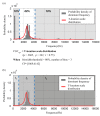Characterization of System Status Signals for Multivariate Time Series Discretization Based on Frequency and Amplitude Variation
- PMID: 29316731
- PMCID: PMC5795535
- DOI: 10.3390/s18010154
Characterization of System Status Signals for Multivariate Time Series Discretization Based on Frequency and Amplitude Variation
Abstract
Many fault detection methods have been proposed for monitoring the health of various industrial systems. Characterizing the monitored signals is a prerequisite for selecting an appropriate detection method. However, fault detection methods tend to be decided with user's subjective knowledge or their familiarity with the method, rather than following a predefined selection rule. This study investigates the performance sensitivity of two detection methods, with respect to status signal characteristics of given systems: abrupt variance, characteristic indicator, discernable frequency, and discernable index. Relation between key characteristics indicators from four different real-world systems and the performance of two fault detection methods using pattern recognition are evaluated.
Keywords: fault detection; frequency domain; sensor data.
Conflict of interest statement
The authors declare no conflict of interest.
Figures









References
-
- Venkatasubramanian V., Rengaswamy R. A review of process fault detection and diagnosis: Part iii: Process history based methods. Comput. Chem. Eng. 2003;27:327–346. doi: 10.1016/S0098-1354(02)00162-X. - DOI
-
- Isermann R. Model-based fault-detection and diagnosis–status and applications. Ann. Rev. Control. 2005;29:71–85. doi: 10.1016/j.arcontrol.2004.12.002. - DOI
-
- Hellerstein J.M., Koutsoupias E., Papadimitriou C.H. On the analysis of indexing schemes; Proceedings of the Sixteenth ACM SIGACT-SIGMOD-SIGART Symposium on Principles of Database Systems; Tucson, AZ, USA. 11–15 May 1997.
-
- Nguyen S.H., Nguyen H.S. Pattern extraction from data. Fundam. Inform. 1998;34:129–144.
-
- Lin J., Keogh E., Wei L., Lonardi S. Experiencing sax: A novel symbolic representation of time series. Data Min. Knowl. Discov. 2007;15:107–144. doi: 10.1007/s10618-007-0064-z. - DOI
LinkOut - more resources
Full Text Sources
Other Literature Sources

